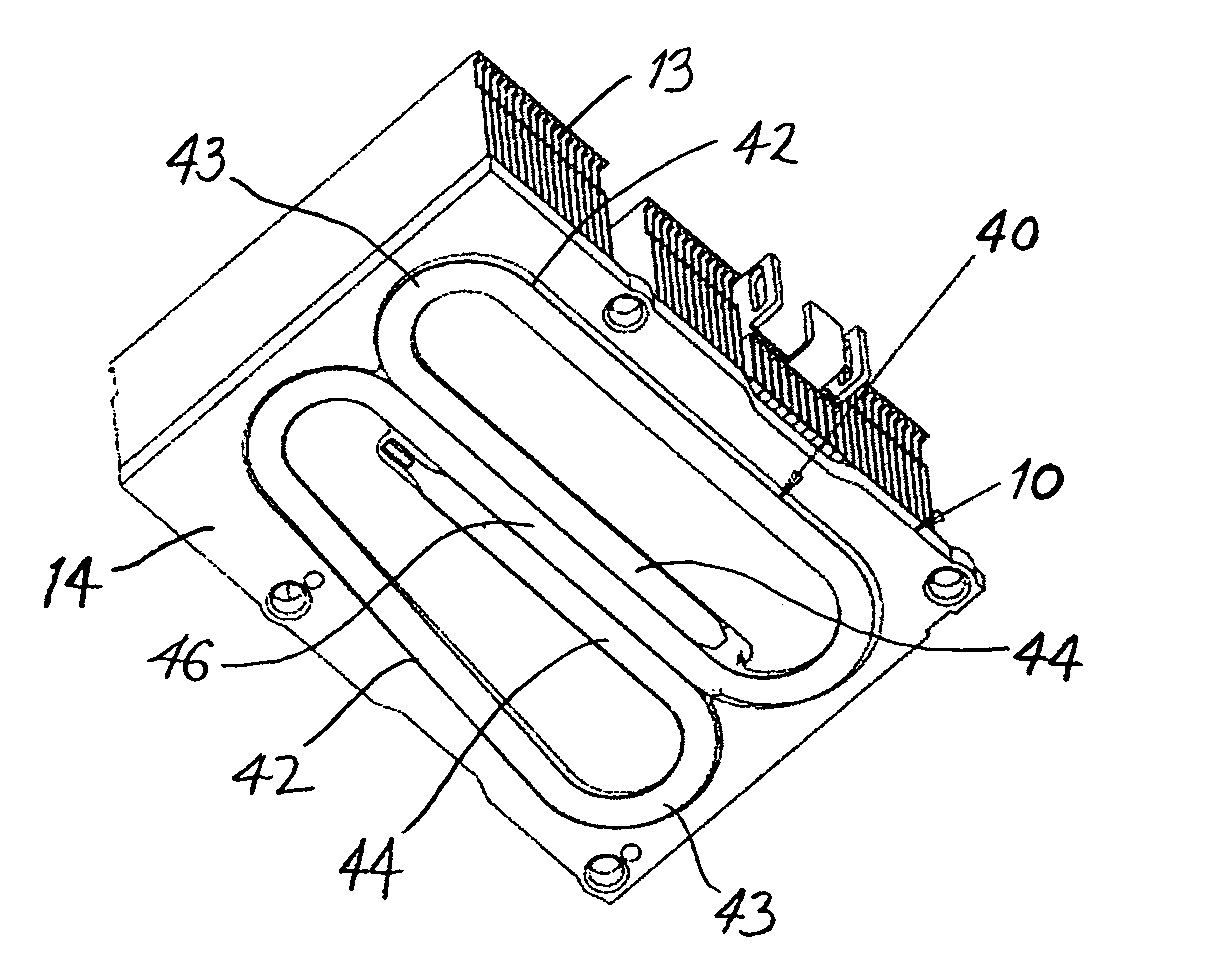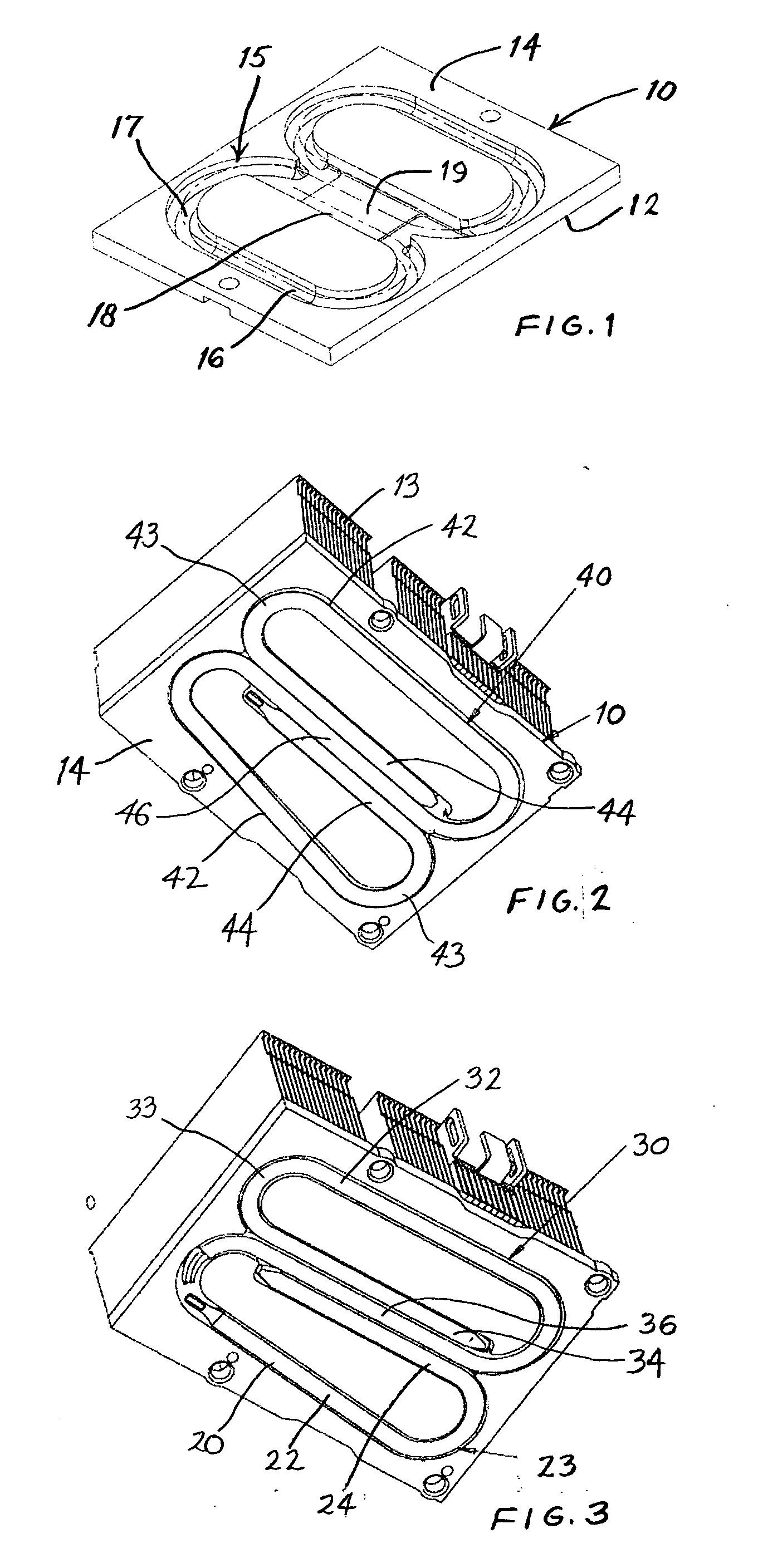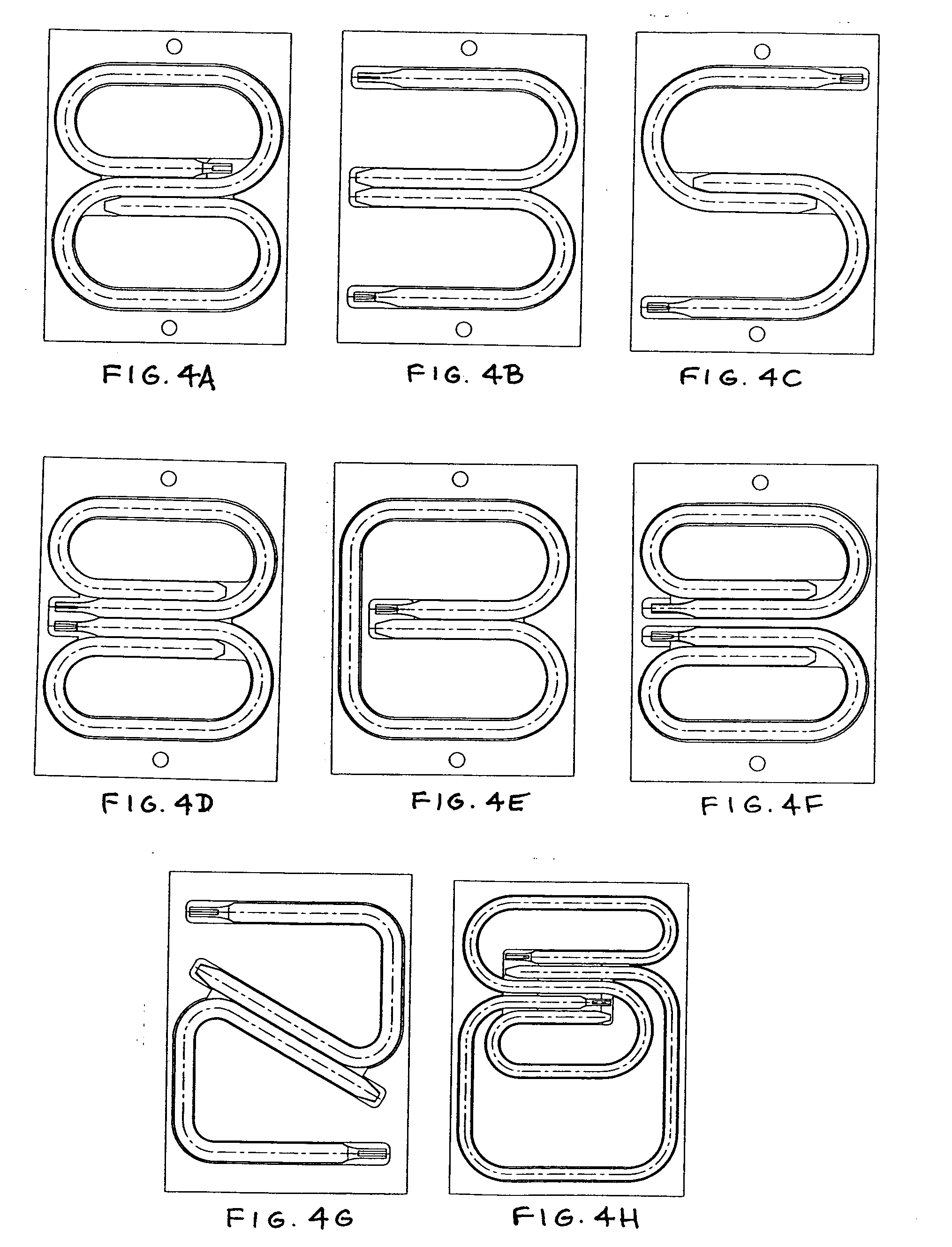Heat sink base plate with heat pipe
a heat sink and heat pipe technology, applied in the field of heat sinks, can solve the problems of limited heat removal ability of heat sinks utilizing heat pipes, unsuitable applications, and relatively high cost, and achieve the effect of higher thermal resistan
- Summary
- Abstract
- Description
- Claims
- Application Information
AI Technical Summary
Benefits of technology
Problems solved by technology
Method used
Image
Examples
Embodiment Construction
[0028]FIG. 1 shows a copper base plate 10 which is inverted so that its top surface 12 faces down and the opposed bottom surface 14 faces up. These surfaces are designated as “top” and “bottom” because the bottom surface would generally be placed over an element to be cooled, such as an IC chip on a circuit board. However it will be understood that the plate 10 can also be mounted against a chip on a vertical surface or even on the underside of a circuit board. In every case, it is intended that the bottom surface 14 is in contact with the element to be cooled.
[0029]The top surface 12 is provided with cooling fins 13, which are omitted here but shown in FIG. 2. The bottom surface 14 has a channel 15 with first or remote regions 16 having a floor 17, and a second or central region 18 having a floor 19, where the floor 19 is raised with respect to the floor 17. As shown in this view, the channel 15 has an overall shape resembling two ovals which are siamesed to form a central region 1...
PUM
| Property | Measurement | Unit |
|---|---|---|
| width | aaaaa | aaaaa |
| shape | aaaaa | aaaaa |
| volume | aaaaa | aaaaa |
Abstract
Description
Claims
Application Information
 Login to View More
Login to View More - R&D
- Intellectual Property
- Life Sciences
- Materials
- Tech Scout
- Unparalleled Data Quality
- Higher Quality Content
- 60% Fewer Hallucinations
Browse by: Latest US Patents, China's latest patents, Technical Efficacy Thesaurus, Application Domain, Technology Topic, Popular Technical Reports.
© 2025 PatSnap. All rights reserved.Legal|Privacy policy|Modern Slavery Act Transparency Statement|Sitemap|About US| Contact US: help@patsnap.com



